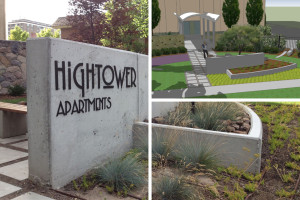 In an era where environmental consciousness is paramount, the field of landscape architecture plays a pivotal role in shaping spaces that not only enhance human experience but also prioritize sustainability. The marriage of nature and development is not just an idea but a practical necessity for the well-being of our planet. This blog delves into sustainable design strategies employed by landscape architects, highlighting their crucial role in creating spaces that harmonize with the environment.
In an era where environmental consciousness is paramount, the field of landscape architecture plays a pivotal role in shaping spaces that not only enhance human experience but also prioritize sustainability. The marriage of nature and development is not just an idea but a practical necessity for the well-being of our planet. This blog delves into sustainable design strategies employed by landscape architects, highlighting their crucial role in creating spaces that harmonize with the environment.
1. Native plant palette: Cultivating biodiversity
One of the foundational principles of sustainable landscape design is the incorporation of native plant species. Native plants are adapted to the local climate, requiring less water and maintenance. Their use promotes biodiversity, supporting local ecosystems and contributing to the overall health of the environment. Landscape architects carefully select plants that thrive naturally in the region, fostering resilience and reducing the need for extensive irrigation.
2. Water efficiency: From conservation to innovation
Water scarcity is a global concern, making efficient water management a core component of sustainable landscape architecture. Designers implement strategies such as rainwater harvesting, permeable paving, and drought-tolerant plantings to reduce water consumption. Smart irrigation systems equipped with sensors ensure that water is used judiciously, responding to real-time weather conditions. These practices not only conserve water but also contribute to the overall sustainability of the landscape.
3. Regenerative design: Healing the urban fabric
Regenerative design goes beyond sustainability by actively contributing to the restoration and improvement of ecosystems. Landscape architects, in collaboration with civil engineers, strive to create spaces that regenerate soil health, enhance biodiversity, and mitigate environmental degradation. By integrating regenerative principles, landscape architecture becomes a catalyst for positive change, breathing new life into urban and suburban environments.
4. Green infrastructure: Nature as a functional element
Green infrastructure transforms landscapes into multifunctional spaces that mimic natural processes. Landscape architects enhance environmental performance while providing functional benefits by incorporating elements such as green roofs, bioswales, and urban forests. Green roofs, for example, improve energy efficiency, reduce stormwater runoff, and create habitats for local fauna. These integrated solutions showcase how nature can be seamlessly woven into the built environment.
5. Site analysis and planning: Informed decision-making
Sustainable landscape design begins with a thorough site analysis. Landscape architects carefully assess the site’s topography, microclimate, and existing ecosystems. This data-driven approach informs decision-making, allowing designers to work with the natural features of the land rather than against them. By understanding the unique characteristics of each site, landscape architects create designs that are not only aesthetically pleasing but also inherently sustainable.
6. Material selection: From recyclability to longevity
Conscious material selection is a key aspect of sustainable landscape architecture. Designers prioritize materials with low environmental impact, considering factors such as recyclability, durability, and embodied energy. Using recycled and locally sourced materials reduces the carbon footprint of projects. Additionally, the incorporation of long-lasting materials minimizes the need for frequent replacements, contributing to the overall longevity and sustainability of the landscape.
7. Community engagement: Fostering stewardship
Successful sustainable design goes hand in hand with community engagement. Landscape architects actively involve the community in the design process, considering local needs and aspirations. Engaging the community fosters a sense of ownership and stewardship, ensuring that the designed landscapes are respected and well-maintained. Sustainable landscapes thrive when they become an integral part of the community’s identity and daily life.
8. Education and advocacy: Spreading the green message
Landscape architects serve as advocates for sustainable practices, using their expertise to educate clients, communities, and fellow professionals. By raising awareness about the benefits of sustainable design, they contribute to a broader cultural shift towards environmentally conscious living. Education becomes a powerful tool in creating a collective commitment to sustainable practices and fostering a deeper connection between people and the landscapes they inhabit.
9. Energy-efficient lighting: Illuminating the green path
In sustainable landscape architecture, lighting is not just about visibility; it’s an opportunity to minimize energy consumption. Landscape architects strategically deploy energy-efficient lighting solutions, such as LED fixtures powered by renewable energy sources. By illuminating pathways, green spaces, and focal points with eco-friendly lighting, designers contribute to a reduced carbon footprint and create a safer, visually appealing environment.
10. Urban heat island mitigation: Cooling concrete jungles
Urban Heat Islands (UHIs) pose significant challenges to the environmental well-being of urban areas. Sustainable landscape architects tackle this issue head-on by integrating strategies to mitigate heat buildup. Through the strategic placement of shade-providing trees, green roofs, and reflective materials, designers create urban oases that counteract heat island effects. These thoughtful interventions enhance the overall livability of urban spaces and promote a healthier urban environment.
Transforming visions into sustainable realities with McNeil Engineering
At McNeil Engineering, we understand the integral role that sustainable design plays in shaping the future of our communities. Our interdisciplinary team, including expert landscape architects, is dedicated to transforming visions into sustainable realities. Collaborate with us to bring environmentally conscious and resilient landscapes to life. Visit McNeil Engineering to explore our comprehensive range of services and embark on a journey towards sustainable design excellence. Together, let’s build a greener, more sustainable tomorrow.








